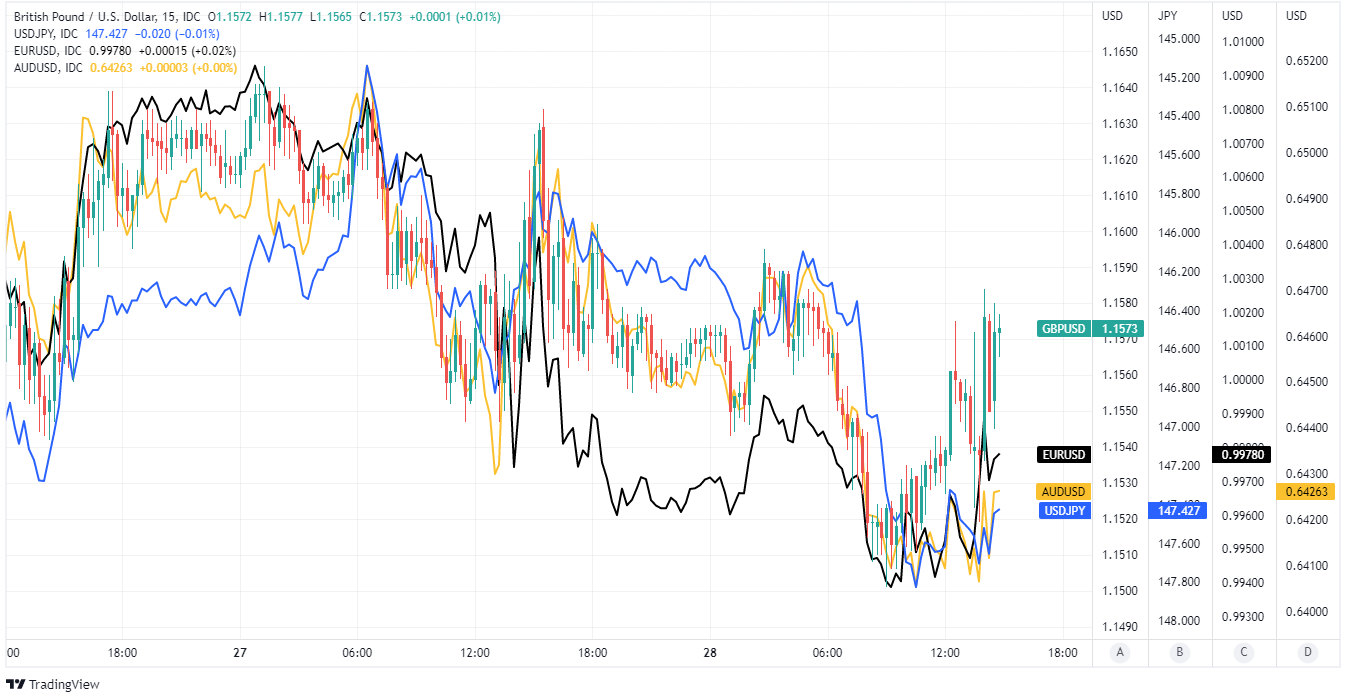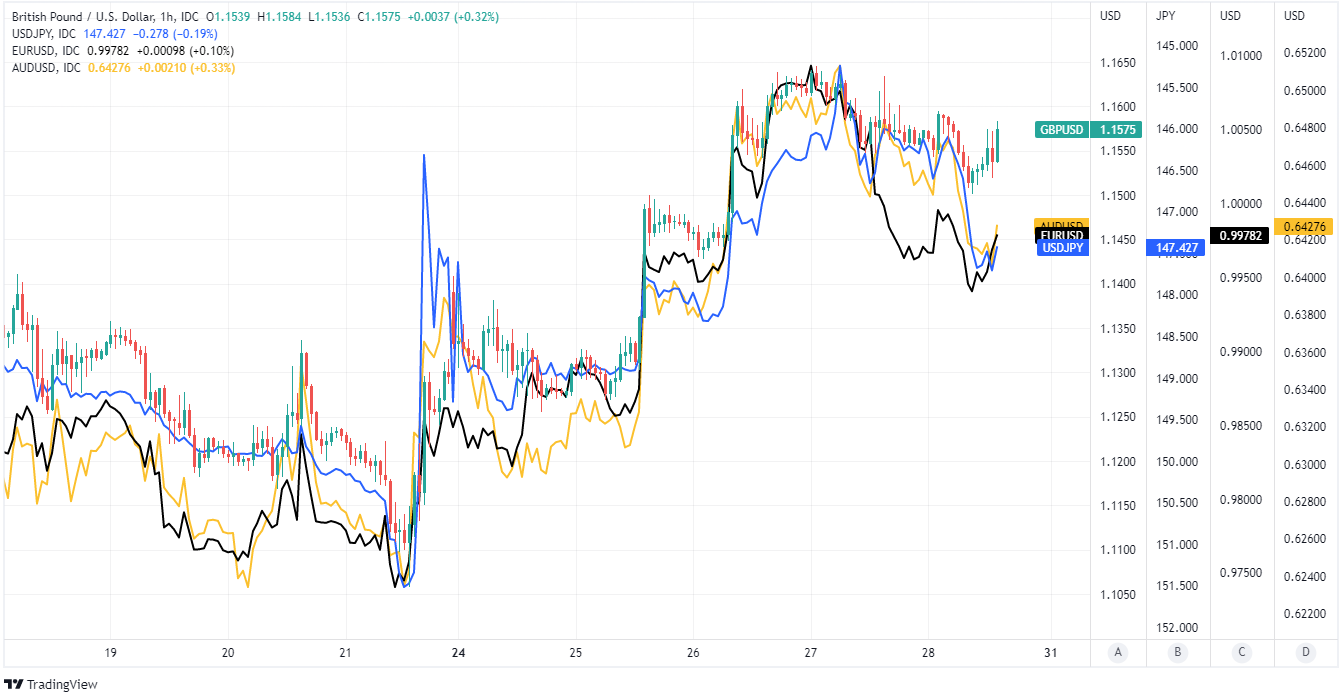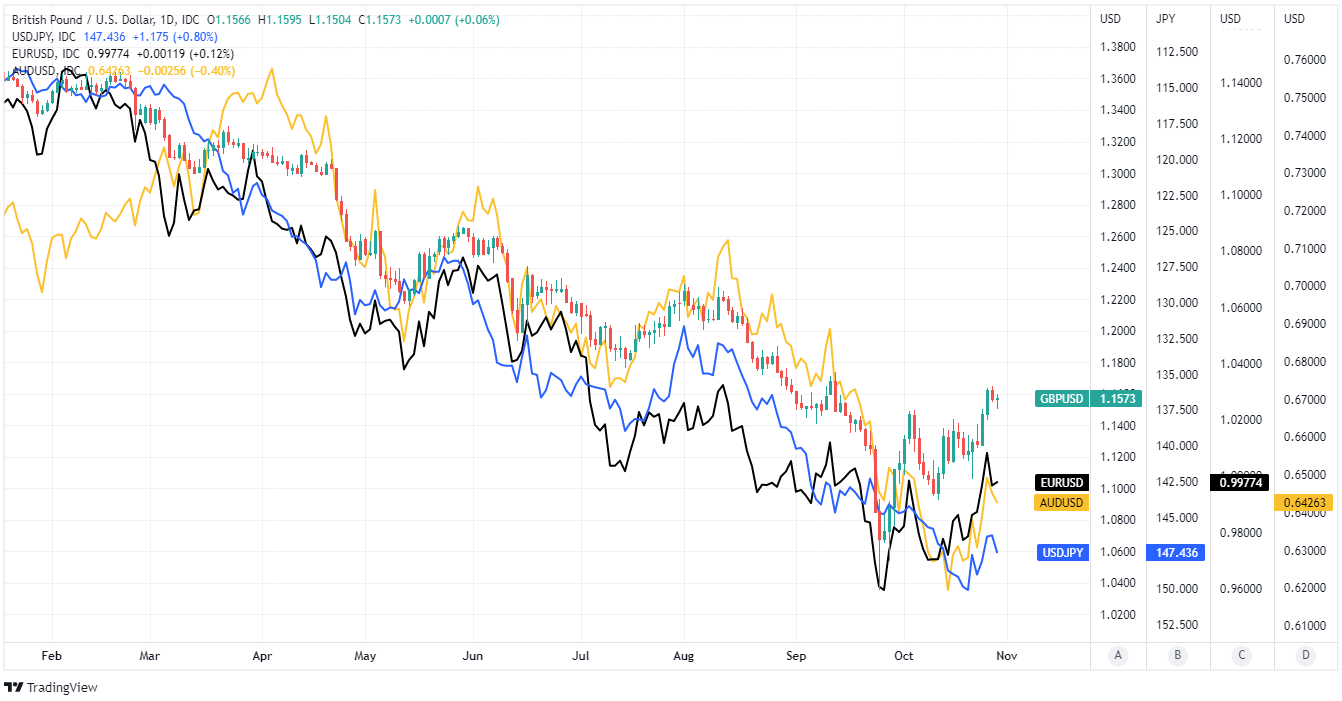GBP/USD Rate Benefits after Fed's Preferred Inflation Measure Underwhelms
- Written by: James Skinner
-
"The slowing in the key component, private sector wages and salaries, was more pronounced," Pantheon Macroeconomics.

Image © Adobe Images
The Pound to Dollar exchange rate remained buoyant near the week's highs after the Federal Reserve's (Fed) preferred measure of inflation underwhelmed expectations and did nothing to persuade the market into bidding afresh for the greenback ahead of next Wednesday's interest rate decision.
Sterling held comfortably above 1.15 against the Dollar in noon trading on Friday after the Core Personal Consumption Expenditures (PCE) measure of U.S. inflation surprised on the downside of economist expectations while also lagging behind the official measure of core inflation reported earlier in October.
PCE price indices are the Fed's favoured measure of inflation and so it may matter to Federal Open Market Committee members next week that the Core PCE price index rose at an annualised pace of 5.1% last month, up from 4.9% previously but less than the 5.2% expected by economists.
Though perhaps more notably, this was much smaller than the 30 basis point September increase in the official measure of core inflation, which rose from 6.3% to 6.6% when reported by the Bureau of Labor Statistics on October 13.
"The key distinction is that today’s data do not mark a new cycle high for core PCE inflation. That milestone was reached in February when it hit 5.4%," says Tim Quinlan, a senior economist at Wells Fargo.
 Above: Pound to Dollar rate at 15-minute intervals with other selected exchange rates including upside down USD/JPY.
Above: Pound to Dollar rate at 15-minute intervals with other selected exchange rates including upside down USD/JPY.
The Pound and other currencies rose following publication though gains were limited in what may reflect significant profit-taking that already pushed most U.S. Dollar exchange rates lower throughout much of the week.
Both of the different core inflation rates referenced above remove energy and food items from the basket of goods for which prices are analysed, given they are volatile and internationally traded, so are thought to provide a better reflection of domestically-driven inflation trends.
When energy and food items are added back into the basket, both official and PCE inflation rates were higher at 8.2% and 6.2% respectively for September.
Friday's PCE data was published alongside the third quarter edition of the Employment Cost Index, which fell from 1.3% to 1.2% in quarter-on-quarter terms and suggested that wage increases moderated across much of the economy during the recent quarter.
"The 1.2% increase in the ECI marks the second straight marginal slowdown, after gains of 1.3% and 1.4% in Q2 and Q1, respectively. But the slowing in the key component, private sector wages and salaries, was more pronounced," says Ian Shepherdson, chief economist at Pantheon Macroeconomics.
 Above: Pound to Dollar rate at hourly intervals with other selected exchange rates including upside down USD/JPY.
Above: Pound to Dollar rate at hourly intervals with other selected exchange rates including upside down USD/JPY.
"This softening in wage growth has come before the impact of the Fed’s tightening has been felt. It is reasonable to expect a further slowing over the next few quarters; that’s certainly the message from the NFIB survey’s employment compensation numbers," Shepherdson adds.
Wages and salaries grew at a slower annualised pace than in the prior quarter for both civilian and private industry workers while rising faster for employees of state and local governments, though pay growth in the public sector has been lower than in the private sector and remained lower last quarter.
None of this is likely to deter the Fed from raising its interest rate next Wednesday when many in the market will look to see another three quarters of a percentage point increase taking the top end of the Federal Funds rate range to 4%, although that is well priced-in for Dollar exchange rates.
"The quickening pace of core inflation more or less makes another 75 bps hike all but assured at the FOMC meeting this coming Wednesday, Nov. 2," Wells Fargo's Quinlan said on Friday.
"That could mark the last 75 bps hike of this cycle if inflation slows markedly as we expect it to, which would allow for a more gradual pace," he added.
The Fed has lifted its interest rates five times since March and recently warned in September forecasts that the top end of the Fed Funds range is likely to reach 4.5% by year-end before rising further to 4.75% in the new year.
 Above: Pound to Dollar rate at daily intervals with other selected exchange rates including upside down USD/JPY.
Above: Pound to Dollar rate at daily intervals with other selected exchange rates including upside down USD/JPY.











